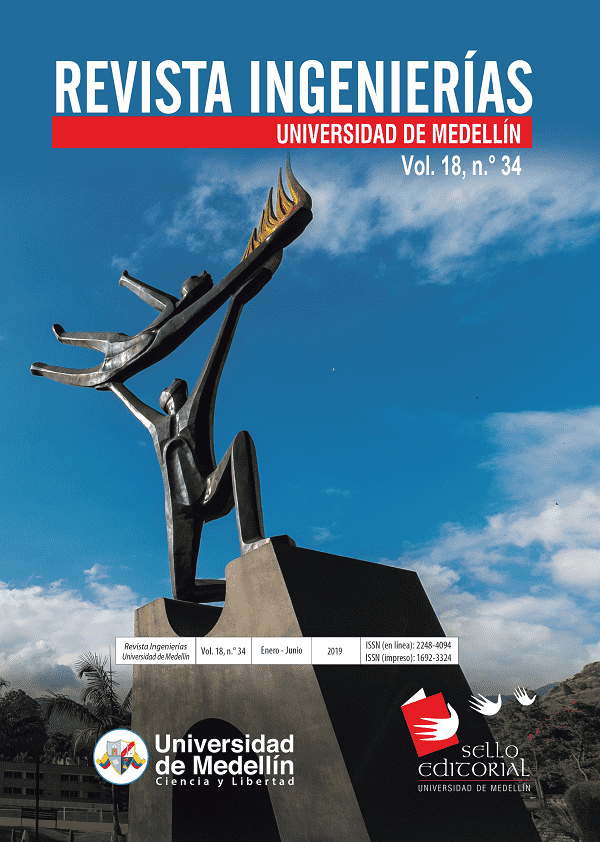Technical and economical impacts for marketers due to the implementation of electric vehicles in Colombia
Main Article Content
Abstract
The need for diversification in the Colombian energetical matrix have produced incentives towards greater participation of electric vehicles (EV) in the market. As EV in cities get deeper into the market the greater the impact over the electrical distribution networks will be. In this paper are described the technical and economic impacts that a network operator or energy provider might face in their distribution systems because of the entrance of EV to the Colombian market. For this, three scenarios were simulated over a secondary distribution system belonging to the Fundadores de Manizales network. The results show that the economic and technical impacts among the network operators depend on the Ev technologies, and additionally, show that the marketers might be benefited from its massification in Colombia.
Article Details
References
[1] International Energy Agency, 'Global EV Outlook 2016. Beyond one million electric cars,' [En línea], Disponible http://selectra.ie/sites/default/files/pdf/Global_EV_Outlook_2016.pdf
[2] Hanke C., Hüelsmann M., Fornahl D. 'Socio-Economic Aspects of Electric Vehicles: A Literature Review', en Hülsmann M., Fornahl D. Evolutionary Paths Towards the Mobility Patterns of the Future. Lecture Notes in Mobility. Springer, Berlin, Heidelberg, pp 13 - 36, 2014
[3] COP21, 'Paris Declaration on Electro-Mobility and Climate Change and Call to Action,' presentado en Un Climate Change Conference, París, 2015.
[4] B. Morales, Modelo de masificación de vehículos eléctricos en Bogotá D.C., Bogotá D.C.: Universidad Nacional de Colombia, 2014.
[5] Ministerio de Comercio, Industria y Turismo, Decreto número 2909 de 17 de diciembre de 2013, Bogotá D.C., 2013.
[6] Unidad de Planeación Minero Energética (UPME), 'Plan Energético Nacional Colombia: Ideario Energético 2050,' Bogotá, 2015.
[7] L. Pieltain et al., 'Assessment of the Impact of Plug-in Electric Vehicles on Distribution Networks,' IEEE Transactions on power systems, vol. 26, n.° 1, pp. 206-213, 2016.
[8] K. Clement-Nyns et al., 'The Impact of Charging Plug-In Hybrid Electric Vehicles on a Residential Distribution Grid,' IEEE Transactions on power systems, vol. 25, n.° 1, pp. 371-380, 2010.
[9] G. Putrus et al., 'Impact of Electric Vehicles on Power Distribution Networks,' presentado en IEEE Vehicle Power and Propulsion Conference, 2009, Dearborn, 2009.
[10] A. Arias et al., 'Optimal Charging Schedule of Electric Vehicles Considering Variation of Energy Price,' presentado en Transmission and IEEE Distribution Conference and Exposition - Latin America (PES TandD-LA), 2014 IEEE PES, Medellín, 2014.
[11] Banco Interamericano de Desarrollo, 'La incorporación de los vehículos eléctricos en América Latina,' BID, 2016.
[12] Comisión de Regulación de Energía y Gas (CREG), Resolución CREG 042 de 1999, Bogotá, 1999.
[13] Comisión de Regulación de Energía y Gas (CREG), Resolución CREG 097 de 2008, Bogotá, 2008.
[14] A. Rueda-Medina et al., 'A mixed-integer linear programming approach for optimal type, size and allocation of distributed generation in radial distribution systems,' Electric Power System Research, vol. 97, pp. 133-143, 2013.
[15] J. Franco et al., 'Optimal allocation of capacitors in radial distribution systems with distributed generation,' presentado en 2011 IEEE PES Conference on Innovative Smart Grid Technologies (ISGT Latin America), Medellín, 2011.
[16] G. Marulanda et al., 'Análisis cualitativo del impacto de la respuesta de la demanda en los cargos por uso del sistema de distribución,' Ingeniería y competitividad, vol. 19, n.° 1, pp. 147-158, 2017.
[17] C. Peng et al., 'An optimal dispatching strategy for V2G aggregator participating in supplementary frequency regulation considering EV driving demand and aggregator’s benefits,' Applied Energy, vol. 190, pp. 591-599, 2017.
[18] R. Rosenthal y GAMS Development Corporation, A User’s Guide, Washington D.C.: GAMS Development Corporation, 2017.
[19] S. Ramírez, Redes de distribución de energía, Manizales, Manizales: Universidad Nacional de Colombia, 2004.
[20] XM S.A. E.S.P., 'Informes de despacho'. [En línea], Disponible: https://www.xm.com.co/Paginas/Generacion/informes-despacho.aspx
[21] K. Rojas y J. Nieto, Análisis de flujo de potencia y perfiles de tensión en sistemas de distribución ante distintos niveles de inclusión de vehículos eléctricos, Bogotá: Universidad de Lasalle, 2016.





